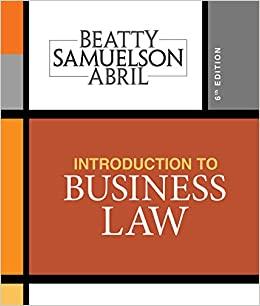Question
Au>Bu>(3 , 5) Au>Bd>(3 , 6) Ad>Bu>(1 , 1) Ad>Bd>(6 , 4) (It's supposed to be like a game tree graph, I cannot upload the
Au>Bu>(3 , 5)
Au>Bd>(3 , 6)
Ad>Bu>(1 , 1)
Ad>Bd>(6 , 4)
(It's supposed to be like a game tree graph, I cannot upload the graph, sorry)
Consider the following sequential game played by A and B who can play either up (u) or down (d):
(a) What is the SPNE of the game?
(b) Does player A have a first-mover advantage? If yes, briefly explain why. If no, suggest a modification to the payoffs of the game such that A has a first-mover advantage.
(c) Does player B have a second-mover advantage? If yes, briefly explain why. If no, suggest a modification to the payoffs of the game such that B has a second-mover advantage.
(d) Interpret this game in normal form (table). Find all other NE to the game and explain why they are not SPNE.
(e) Suggest a modification to the payos of the game such that the original SPNE is still an SPNE and one of the other NE found in part (d) becomes an SPNE as well. Illustrate the game tree and payoffs from your modified game and use backward induction to illustrate the two SPNE.
Step by Step Solution
There are 3 Steps involved in it
Step: 1

Get Instant Access to Expert-Tailored Solutions
See step-by-step solutions with expert insights and AI powered tools for academic success
Step: 2

Step: 3

Ace Your Homework with AI
Get the answers you need in no time with our AI-driven, step-by-step assistance
Get Started


